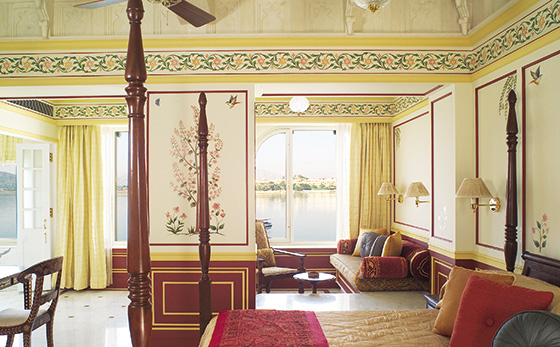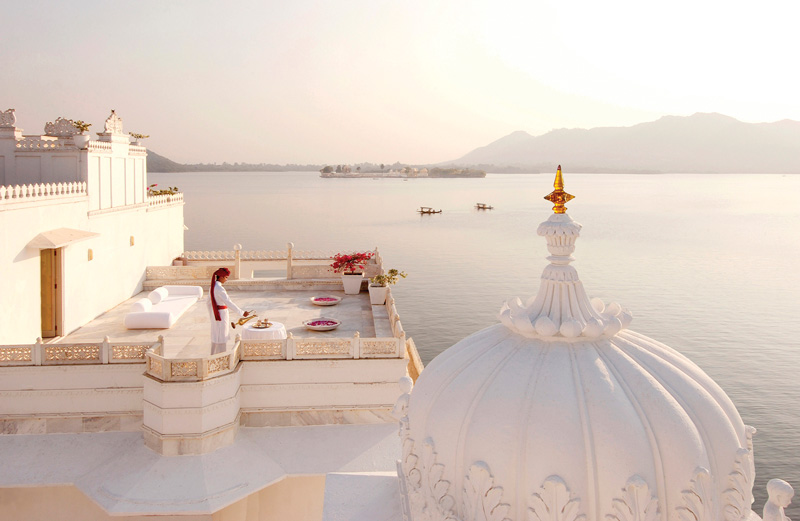
The white marble palace rises like a shimmering mirage from the waters of tranquil Lake Pichola, seeming to colour as the sun moves across the sky. Unsurprisingly, the hotel has a reputation as one of the most romantic in the world.
Built as a palace for the royal family of Udaipur in 1746, it was originally known as Jag Niwas. The natural foundations are spread over an area of 4 acres; about the size of 3 football fields. The building faces east, so that inhabitants could rise at dawn and worship the Hindu sun god Surya.

At the top of the hotel is a domed room that is 6.4 metres (21 feet) in diameter, reflecting the grand architecture throughout.
For many years after it was built, it was used as the summer palace by Maharana Jagat Singh II, its creator, and his descendants, with the opulent courtyards for state and ceremonial gatherings. Then, in 1957, the Indian Rebellion against the rule of the British East India Company sent many European families fleeing from nearby Nimaj, and the Maharana Swaroop Singh offered them refuge in the palace. He then destroyed all the boats in the town so rebels could not get to the “floating” palace.
In the years that followed the palace started to fall into disrepair. A cyclist visiting the region, Fanny Bullock Workman described the palaces as having cheap and tasteless style, saying she was distressed by the “lack of Eastern splendour”. There was no real restoration work done for some time, and when the theatre personality Geoffrey Kendal visited in the 1950s; he called the palace “totally deserted, the stillness broken only by the humming of clouds of mosquitos”.

All that changed when, in 1961 Bhagwat Singh decided to turn the palace into the first luxury hotel in the region. He hired an American artist named Didi Contractor to help design the hotel and she worked on it with him for eight years. She recounted the experience as “a sense of being one of the last people to be an artist for the king”. She also described how the project was done on a shoestring because his highness had inherited a string of financial problems. One of these was a group of 300 dancing girls that belonged to his predecessor! He attempted to offer them all nursing scholarships, but they were reluctant to move out of the palace, so he had to keep them. Did recounts “they would come to sing and dance with their ghunghats [veils] down and occasionally one would lift hers to show a wizened old face underneath.”
Taj hotels and Resorts took over the hotel in 1971, adding more rooms, and helping to continue the restoration bringing the iconic palace back to its former glory. Every party of the hotel today harks back to the history of the palace, its royal caretakers and indeed the culture of the region. The “Royal Butlers” which the hotel employs not only evoke the opulence of days gone by, but are actual descendants of the original palace retainers.







